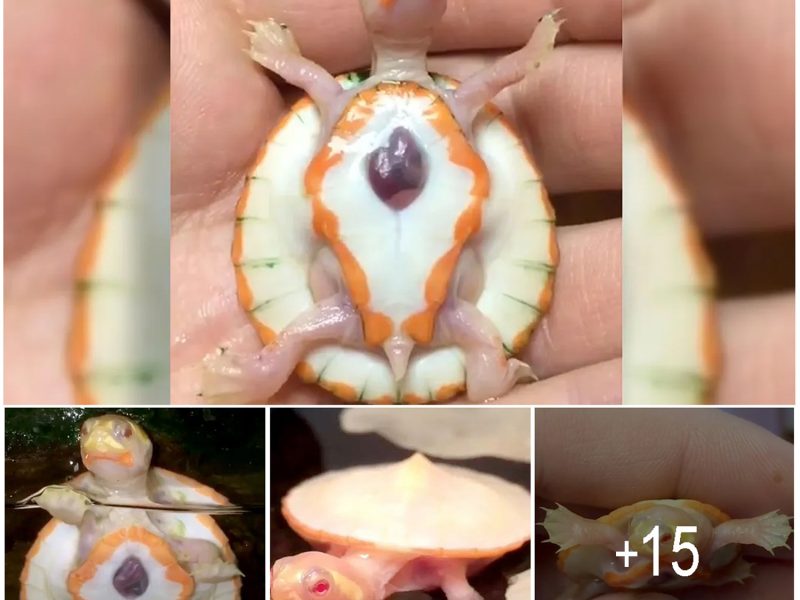Many things can leave us speechless, and one of the never-ending sources for that is nature. Nature never fails to sweep us off our feet, and this breath-taking bird is the proof for that.
If you are a bird lover, you probably already know, but for those who are not familiar with the topic, ornithology is a branch of zoology that deals with the study of birds. Birds are fascinating creatures, and except for their attractive appearance, they are also essential when it comes to pest control, plant pollination, and seed dispersal.
And for today’s topic, we have chosen a brightly colored Toucan Barbet. The Toucan Barbet (Semnornis ramphastinus) is a medium-sized bird from the Semnornithidae family.
The birds from this family can be found across South America, on the western slopes of the Andes in southern Colombia and northern Ecuador at around 4,600-7,900 ft (1,403-2,408 m) altitude. Toucan Barbet inhabits Neotropics, wet mountain forest and edges, as well as a low bushy secondary forest with scattered tall trees, are well-established haunts for this colorful bird.
As for its appearance, Toucan Barbet’s plumage has a remarkable variety of colors. From the black crown, distinctive white stripes behind the eyes, golden-brown nape that becomes yellow towards the rear, bright red middle belly and lower breast, pale yellowish-green lower belly to grey wings, and tail. This fantastic color combination will for sure leave you open-mouthed.
Take a look at the photos below and find out more about this eye-catching bird. Meet the Toucan Barbet.
Biometrics:
Toucan Barbets are medium-sized birds. They are 7.5-8.3 in (19-21 cm) long and weigh-in, approximately 80–115 g (2.8–4.1 oz).

Behavior:
Toucan Barbets can be usually found in pairs. But on the other hand, they are highly social and live in small mixed-species flocks of up to 6 members. These arboreal birds are early risers, and they are pretty active during the day.
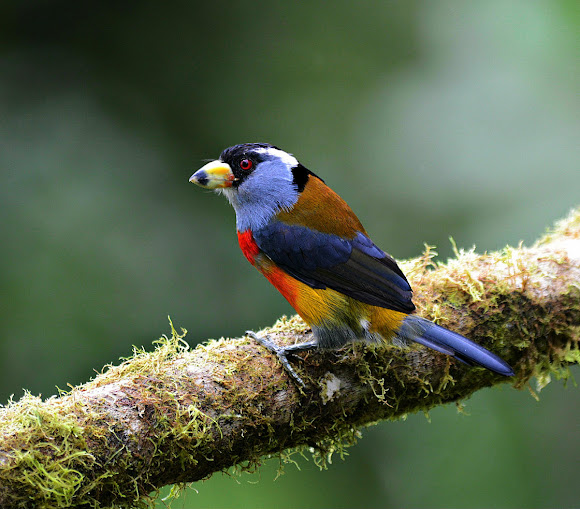
Female Toucan Barbet is very similar to a male Toucan Barbet, except the female plumage is slightly duller than the male’s.
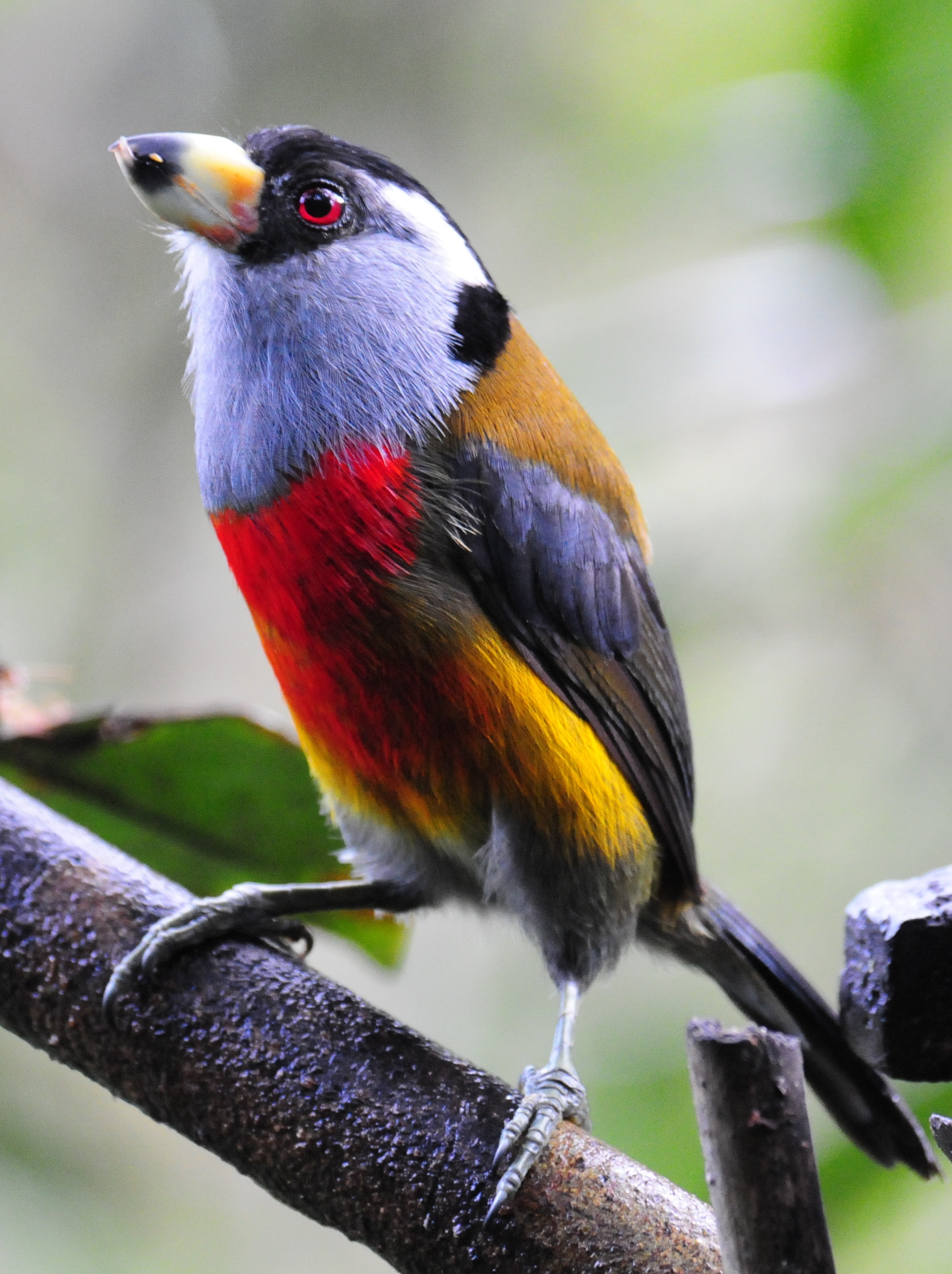
Nesting:
When it comes to choosing the tree for a nest they are very particular. Using their scissor-like beaks, Toucan Barbets cut the cavity trees to create their nests. They position their nests at about 1 to 5 meters above the ground.
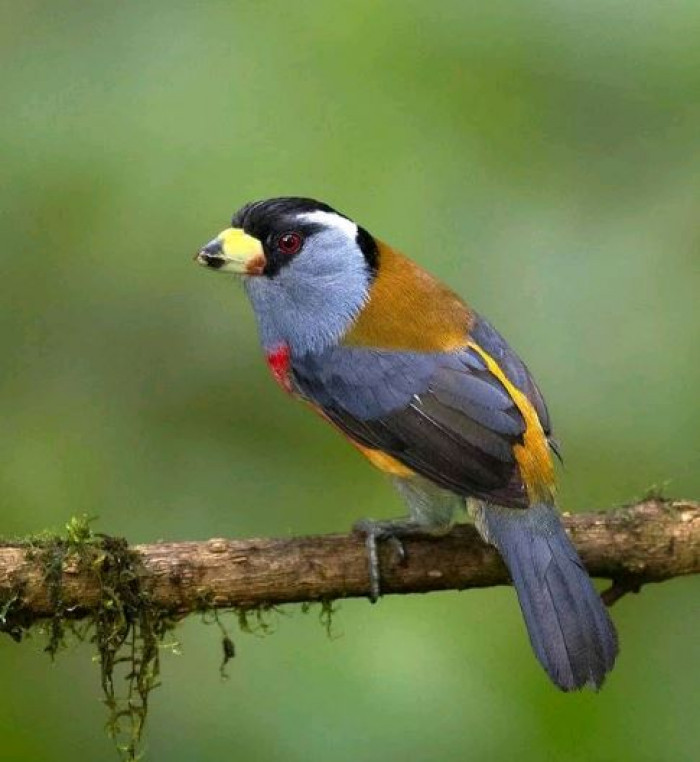
Breeding:
The Toucan Barbets are monogamous, and their breeding season is from February through to October. The female lays 2-3 eggs, and they are incubated by all the family members.
After 15 days, the eggs hatch, and all the group members are responsible for feeding the chicks. Young Toucan Barbets leave the nest after 43-46 days when they become fully independent
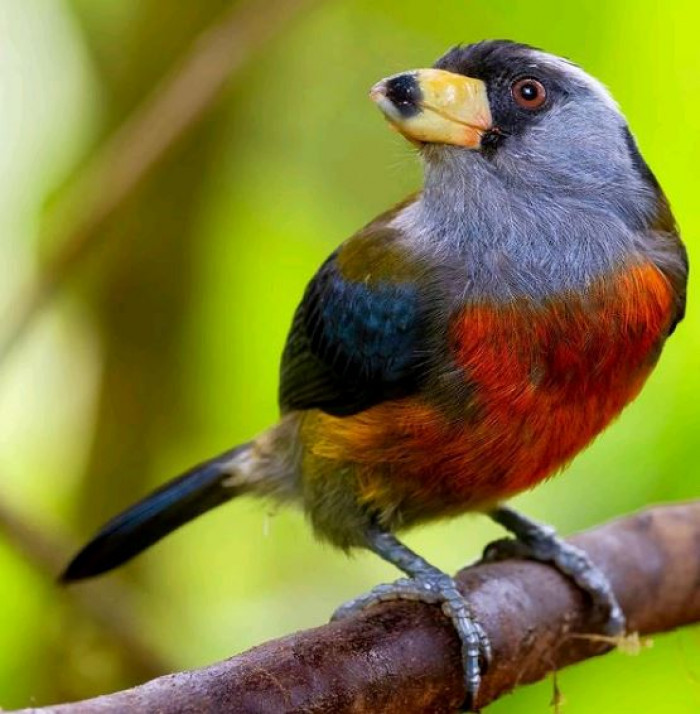
Diet:
The Toucan Barbet’s diet mainly consists of fruits. But another important part of their diet is insects.
Insects are usually eaten by adults in April but are more common in the nestling diet. These birds have also been recorded eating flower petals.
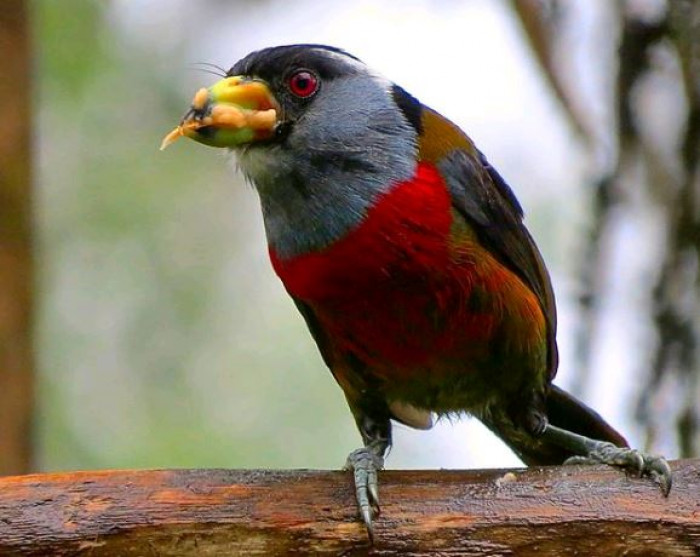
Communication:
They communicate through body language and vocalization. At the breeding season, love songs are sung by the breeding pair.
Their call can travel long distances, and the call frequency changes depending on the season in April for example, it decreases. When they are threatened by the predators, Toucan Barbets use their beaks to knock and peck on the wood, which drives the predator away from the nest.

Bright red iris and distinctive white stripe lines behind the eyes make these spectacular birds unique.
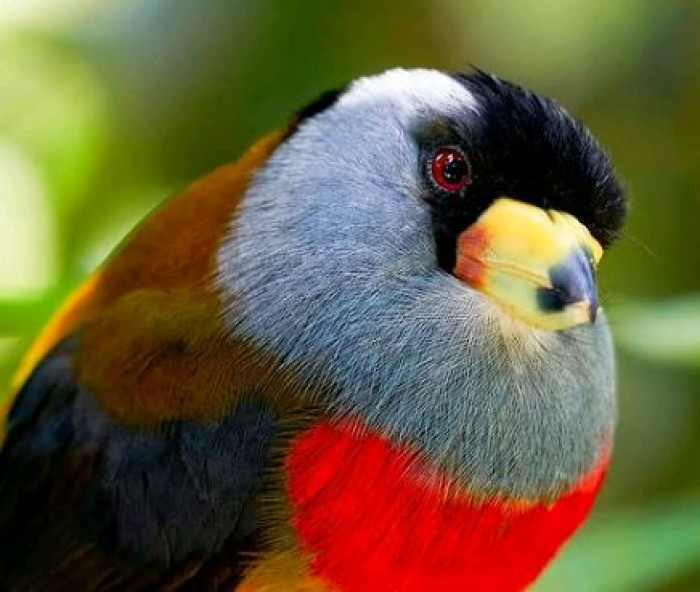
Check out the video and get to know this unique bird better.
Although Toucan Barbets are not endangered, they have been evaluated as Near Threatened by the IUCN (International Union for Conservation of Nature). Their main threats are humans, habitat loss, cattle grazing, and illegal trapping for the cage bird trade.
If you know where to look plenty of beautiful things can be found in nature, and we hope we have broadened your horizons for at least one new bird. These arboreal birds are a true nature’s gift, don’t you think.
